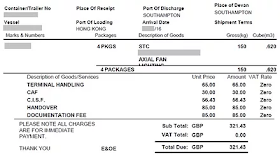STATEMENT ON LONGER RUN GOALS AND MONETARY POLICY STRATEGY
"The goals of monetary policy are to promote maximum employment, stable prices and moderate long-term interest rates. By implementing effective monetary policy, the Fed can maintain stable prices, thereby supporting conditions for long-term economic growth and maximum employment.." - Federal Reserve
Fed Chairman Jerome Powell delivered a speech at the Kansas City Fed’s annual Jackson Hole policy symposium on 26th of August under the theme of "Monetary Policy Framework Review."
The Jackson Hall Meeting, a conference of renowned economists, is one of the annual events that attracts the most attention to the world every year. This is because the chairman of the Fed attends and presents directions for future interest rate policy.
The event is drawing keen attention as it could make remarks regarding the Fed's review of its interest rate policy for a year and a half. Considering on the continuing changes economic environment, the Fed said it will review its current rates so far and re-establish future policy directions.
“Our revised statement emphasizes that maximum employment is a broad-based and inclusive goal,” Mr. Powell underlined. “This change reflects our appreciation for the benefits of a strong labor market, particularly for many in low- and moderate-income communities.”
Interest rates will not be raised even if the inflation rate exceeds 2%.
The Fed's most likely review is the abolition of its previous "2% inflation target" adopted in 2012. The Fed saw 2% as price levels that induce growth without adversely affecting the economy. They responded by raising interest rates if prices were likely to rise higher than 2%.The inflation rate in the United States has been well below the threshold for the past eight years. When the unemployment rate fell, the demand for labor increased and wages and inflation rose. Despite the low unemployment rate, wages did not rise and prices hit the bottom due to the low growth trend and technological innovation.
Fortunately, central banks around the world were able to lower their policy rates to a record low in response to the economic slowdown without worrying about rising prices.
However, growing concerns about low inflation troubled Japanese economy over the past two decades and Europe for a decade, which means when low prices continue and people think that prices will fall further than they are now, could spread by cutting back on consumption. If the economy gets worse here, there's no way to do anything about it anymore. (This is the reason why Japanese government bond were popular among its nation even though the yields were near zero. Almost 90% of Japanese nation holds their government bond which won't damage severely despite their fiscal deficit is over 200%. Greek situation is unlike Japan since they have foreign debts.)
The Fed mentioned about "average inflation targeting" that will have an average inflation rate of 2 percent "over time". Despite inflation rate reaches at 2%, Federal Reserve will remain short term interest rate pinned near zero for a while. PCE(personal consumption expenditures price index), which determines whether the Fed reaches its inflation target, rose only 0.9 percent in June after rising 1 percent in May. Experts predict that prices of some food and meat, which have been hit by supply chains in the aftermath of COVID-19, may rise, but not enough to reverse the low price trend.
Policy focus, price stability, employment and economic stability
It is not new that Powell and other Fed officials stressed job security by mentioning low inflation rate. It is more than a one-time comment because it means that the government will maintain this stance no matter how the economic situation changes in the future.
The Fed's policy focus is expected to shift completely from inflation stability to job security and economic growth. (So called dual mandate) Lewis Alexander, chief economist at Nomura Securities, said the Fed would not do anything that would put a damper on the job market unless it causes unfavorable inflation.
Some worry that the Fed is trying to play a policy role beyond its capabilities. "The monetary policy is approaching its limits," Paul Ashworth of Capital Economics, the U.K., said. "We don't publicly acknowledge it, but we can see that they are demanding stronger fiscal policy from the U.S. Congress."
Treasury bond yield rises
The implications of the announcement weren’t immediately clear for bond investors. The Fed’s long-telegraphed strategy means the central bank will likely leave short-term interest rates near zero for years to come (call money rate), an outcome that by itself should support demand for Treasuries. At the same time, higher inflation erodes the purchasing power of bonds’ fixed payments, potentially making longer-term bonds less appealing.
Following their initial drop, bond yields turned higher as investors focused on the less supportive aspects of the Fed’s policy, analysts said.
Aiding the move: the Fed didn’t commit to buying more longer-term Treasurys as part of its inflation strategy. That disappointed some investors who are concerned that the Fed’s current purchases could be overwhelmed by a deluge of new debt entering the market as the federal government funds efforts to revive the economy. (If Fed buys long term bonds, then there will be problem of austerity)
Source: Federal Reserve
https://www.federalreserve.gov/monetarypolicy/guide-to-changes-in-statement-on-longer-run-goals-monetary-policy-strategy.htm?fbclid=IwAR2vh7TkdObo6GRhihOX_r7bLBFMm9qEwOnai3vU-1yRDUYLeHWTUJ6ECmY
Source: Global Monitor
https://www.globalmonitor.co.kr/view.php?ud=2020082005303583651a6a872ef5_41
https://mobile.globalmonitor.co.kr/view.php?ud=202008200658229728915ce92b70_41
Source: New York Times
https://www.nytimes.com/2020/08/27/business/economy/federal-reserve-inflation-jerome-powell.html
Source: CNBC Television
https://youtu.be/D7xw7SPIDqM
Source: Wall Street Journal
https://www.wsj.com/articles/u-s-government-bond-yields-fall-after-fed-policy-shift-11598535620#:~:text=Newsletter%20Sign%2Dup&text=Aiding%20the%20move%3A%20the%20Fed,part%20of%20its%20inflation%20strategy.&text=By%20the%20end%20of%20the,%25%2C%20from%200.686%25%20Wednesday.
https://www.wsj.com/articles/fed-weighs-abandoning-pre-emptive-rate-moves-to-curb-inflation-11596360600#:~:text=The%20Federal%20Reserve%20is%20preparing,for%20more%20than%20three%20decades.&text=Federal%20Reserve%20officials%20warn%20of,coronavirus%20is%20not%20stepped%20up.
https://www.wsj.com/articles/feds-powell-headlines-virtual-jackson-hole-economic-conference-11598486400#:~:text=The%20Federal%20Reserve%20approved%20a,low%20for%20a%20long%20time.
Source: Wall Street Journal
https://www.wsj.com/articles/u-s-government-bond-yields-fall-after-fed-policy-shift-11598535620#:~:text=Newsletter%20Sign%2Dup&text=Aiding%20the%20move%3A%20the%20Fed,part%20of%20its%20inflation%20strategy.&text=By%20the%20end%20of%20the,%25%2C%20from%200.686%25%20Wednesday.
https://www.wsj.com/articles/fed-weighs-abandoning-pre-emptive-rate-moves-to-curb-inflation-11596360600#:~:text=The%20Federal%20Reserve%20is%20preparing,for%20more%20than%20three%20decades.&text=Federal%20Reserve%20officials%20warn%20of,coronavirus%20is%20not%20stepped%20up.
https://www.wsj.com/articles/feds-powell-headlines-virtual-jackson-hole-economic-conference-11598486400#:~:text=The%20Federal%20Reserve%20approved%20a,low%20for%20a%20long%20time.

















